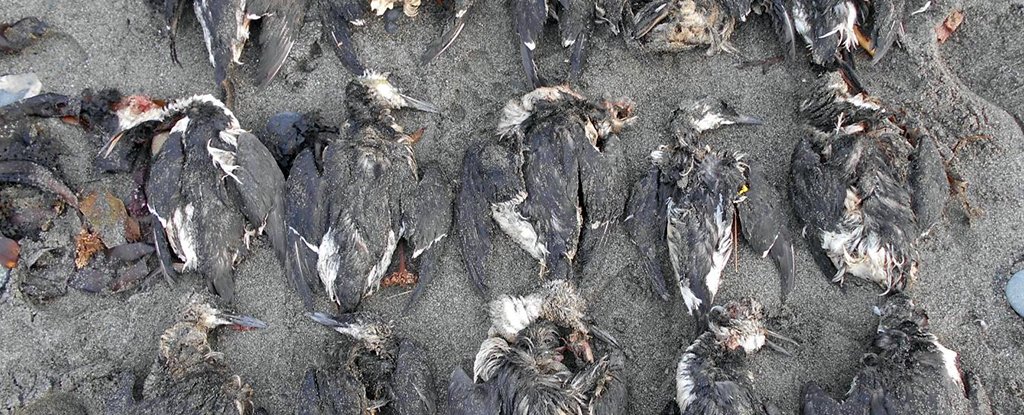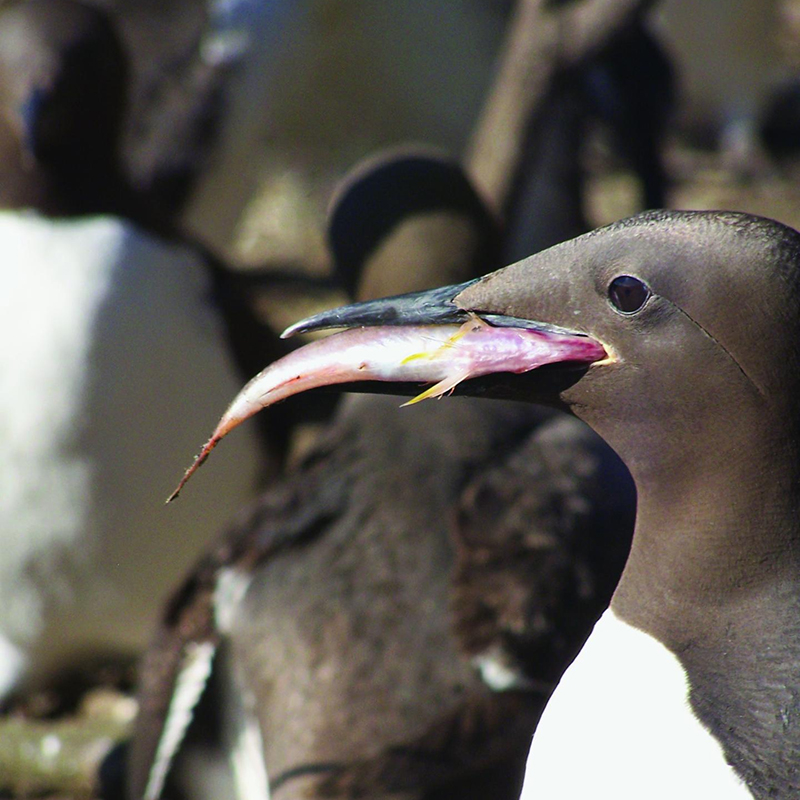
Scientists have reported on another devastating biological disaster, caused by a patch of abnormally warm water in the Pacific Ocean known as 'the Blob'.
This concentrated marine heatwave lingered in the northeast Pacific between 2013 and 2016, and researchers now think it was largely responsible for the death of almost a million common murres (Uria aalge), amongst other wildlife. This makes it the largest seabird die-off in recorded history.
The estimate is based on some 62,000 murres that washed ashore on the west coast of the US during 2015 and 2016, covering an area stretching from California to Alaska. Only a fraction of birds that die at sea typically wash ashore, indicating the scale of the mass dying was much larger than the number of bodies we've found.
The emaciated birds were left starved by a lack of food, caused by increased competition in the warmer waters, according to the scientists – and numerous other species may have been hit by the same confluence of factors.
"Think of it as a run on the grocery stores at the same time that the delivery trucks to the stores stopped coming so often," says biologist Julia Parrish, from the University of Washington.
"We believe that the smoking gun for common murres – beyond the marine heat wave itself – was an ecosystem squeeze: fewer forage fish and smaller prey in general, at the same time that competition from big fish predators like walleye, pollock and Pacific cod greatly increased."
The team reviewed studies of fish and plankton collected by fisheries during the time the blob was at its peak, as well as other field studies and reports, and concluded that the warmer temperatures in the water had increased the metabolism of these cold-blooded ocean dwellers.
That meant predatory fish would have been eating more than usual, and that's likely to have caused pressure on the top of the food chain. In the end, the schools of forage fish that murres rely on would've become very hard to find.
While the common murre is one of the most resilient birds around – feeding on small 'forage fish' like herring, sardines, anchovies and young salmon – it was unable to cope with the effects of the blob.
 The common murre. (Jane Dolliver)
The common murre. (Jane Dolliver)"Food demands of large commercial ground fish like cod, pollock, halibut and hake were predicted to increase dramatically with the level of warming observed with the blob," says biologist John Piatt, from the US Geological Survey's Alaska Science Center.
"Since they eat many of the same prey as murres, this competition likely compounded the food supply problem for murres, leading to mass mortality events from starvation."
Mass die-offs seen in Cassin's auklets and puffins can most probably be attributed to warming events as well, the scientists say. They describe seabirds like the murres as "bellwethers" of warming oceans and the ecological change they bring.
Localised ocean heatwave blobs have become more common over the last century, and are expected to further increase in frequency as the planet warms up. This particular one was exacerbated with warming winds from El Niño during 2015 and 2016.
Similar blobs of heated ocean water are now forming across the globe, threatening to impact marine wildlife further. As far as the researchers behind this latest study are concerned, the toll taken on the murre population is a warning of what's to come as climate change takes hold – in other words, the next die-off could be even worse.
"The magnitude and scale of this failure has no precedent," says Piatt. "It was astonishing and alarming, and a red-flag warning about the tremendous impact sustained ocean warming can have on the ecosystem."






No comments:
Post a Comment